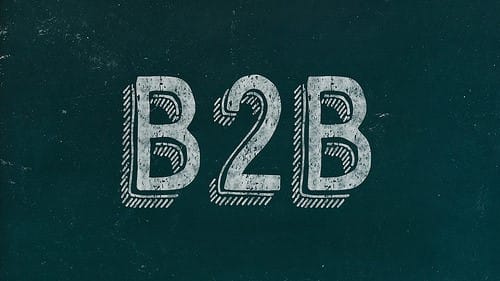B2B Content Strategy - Why Every Business Needs One
Most businesses and consumers are familiar with B2C marketing. However, many businesses fail to recognize the advantages of investing in B2B Content Marketing.

B2B marketing is the process of companies selling products or services to other companies. While the basic principles of B2B marketing are the same as those of consumer marketing, the decision-making process for B2B buyers is relatively different from that of regular consumers. Therefore, it is important to adjust your marketing plan accordingly.
B2B marketers often focus on presenting an expert perspective on a particular product or service. They don’t realize that most B2B buyers aren’t interested in this type of information, and it has a minimal impact on their decisions to purchase. B2B buyers are more interested in marketing information that teaches them something new about their business or offers them something that is likely to improve their performance. Here is an overview of the most common B2B marketing mistakes.
Many B2B sellers now cater to buyers across the globe. But, in an effort to reach these customers, they often end up over-personalizing their marketing messages. While this strategy works well in consumer marketing, it can backfire as a B2B selling strategy. Research shows an average 5.4 customer stakeholders are involved in a B2B purchase. When marketing to a group, with potentially diverse perceptions, priorities, and expectations, it’s difficult to come up with something that will be effectively personalized for each member. It’s better to use a marketing message that incorporates a broader vision, so the members involved in the purchasing decision can more readily agree on a collective solution.
One of the most common B2B marketing mistakes is to believe the target audience’s engagement with your marketing content is an indicator of purchase progress. This is not always the case, because that’s not how B2B buyers generally operate. If B2B sellers want to track the purchase path, they first need to map it. They need to determine a typical buying process for the product or service in question, and then design their marketing message accordingly.
The goal of content marketing is to motivate your target audience to take the desired action. But most B2B content is too technical to attract the key decision makers, and it fails to generate the type of leads with more potential to be converted. Thus, the content does not generate the value that it ideally should.
The internet has made communication incredibly easy. However, this easy access to information means B2B sellers have to be extremely vigilant with respect to their external environment. Your marketing message may have to be adapted according to competitor activity and market trends. Failure to do so can result in setbacks in sales and performance. You need to closely monitor how your audience is responding to your message, and determine whether your existing marketing strategy is delivering results in terms of conversion and sales.
This is not a question of the language that your customer speaks, but the language that they understand. B2B customers are well-versed in the product or service they want to buy. They understand the technical jargon and the application of that product or service as well. But marketers often beef up their marketing messages to make them look fancy or appealing, but in the process end up using phrases that don’t have any impact on the customer’s purchase decision. Using clichés and hackneyed phrases are also among the B2B marketing mistakes that one should try to avoid.
The use of graphics is an important component of any company’s marketing strategy, but sometimes B2B sellers focus too much on using perfectly beautiful images which seem unrealistic and fake. B2B customers are smart. They know their business, they know their product, and they know what they want. They would much rather see the actual product or service in action. Businesses often make these B2B marketing mistakes and end up losing customers because their graphics are impractical or irrelevant.
The key focus of marketers is always their product or service. But that does not mean your entire focus should be on the product. While there is no harm in outlining the key features and benefits, it is equally important to understand what your customers want, their unmet needs, and the problems they face. Based on this understanding, your marketing message should address needs and offer solutions. The message should include a mix of information, from basic to in-depth. You should talk about your product or service but, at the same time, you should provide additional information to your readers, such as market analyses, a discussion of exciting trends, or features on major players in the market. This way, you can connect more effectively with B2B buyers and present things in a way that will motivate them to buy.
It is important to remember that the quality of your marketing is what will differentiate you from your competition. A high-quality marketing strategy will also improve your visibility through search engines. This will help you connect with potential customers more effectively. Many B2B sellers today use the Magento Commerce Edition with its suite of B2B marketing tools. They also use Magento’s drag and drop content management system (CMS). It allows you to create rich and relevant content. This will help you communicate your marketing message to your customers more effectively.
Magento is adaptive and flexible, which is why it’s one of the most widely used platforms today. It is designed to meet the needs of different types of businesses, whether small or large, local or international. You can use Magento to manage your content marketing efforts and monitor customer purchase patterns and pathways. You can also use it to offer customers solutions that will motivate them to buy your product or service. By using an eCommerce solution like Magento, you can avoid making these B2B marketing mistakes.

Most businesses and consumers are familiar with B2C marketing. However, many businesses fail to recognize the advantages of investing in B2B Content Marketing.

Industrial supply companies must adopt strategies tailored to their unique strengths and market position to compete with top brands in the sector.

Learn the best tips for B2B eCommerce email marketing. Here we will tell you how to get successful email marketing campaigns.